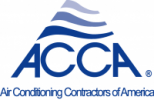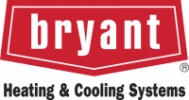Breathe Easy: 3 Ways to Increase Indoor Air Quality in Your Home

Although it may seem counterintuitive, indoor air is commonly two to five times more contaminated than outdoor air, according to the Environmental Protection Agency (EPA). Homeowners across Santa Clara County are making smart energy efficiency improvements that "tighten" their home's building envelope and decrease air leaks (air "infiltration"). While these improvements are fantastic, they make it more important than ever to ensure your home has ample ventilation.
With many sources of indoor air pollutants within the home, it's beneficial to minimize them while boosting healthy practices. Here are 3 actions you can take for cleaner air in your Silicon Valley home.
1. Prevent Mold and Moisture
Mold can trigger allergic reactions, aggravate asthma symptoms, and even sometimes produce toxins. Regardless of whether someone is allergic to mold, it can irritate the eyes, nose, skin, throat and lungs.
Moisture is the most important factor promoting mold growth – wet surfaces can start growing mold in a mere 24 to 48 hours. Look for mold around leaky plumbing fixtures, your foundation, and windows. Also beware of leaks from the roof, humidifiers, and sprinkler systems.
To address mold growth, stop the source of moisture from entering your home, clean up the mold if possible and replace items that can't be adequately cleaned, such as carpeting, furniture, and ceiling tiles. For severe water damage and mold growth, consult an expert.
2. Install a Whole House-Ventilation System
One of the best ways to improve air quality is to supply fresh air to the home and to remove stale air. Heat recovery ventilation systems (HRV) and Aprilaire whole-house purification systems remove pollutants and provide fresh air to your home.
HRVs supply a constant stream of fresh air while transferring heat from the outgoing air to the incoming air. Zehnder HRV systems are up to 95% efficient, so unlike typical bathroom exhaust fans, precious heat does not get a chance to exit your home. This ensures your home has high quality air as well as keeps heating costs down.
3. Use Low-Emission Products
Many of the products and goods that we use in our homes release volatile organic compounds (VOCs), some of which are known or suspected carcinogens. To reduce your exposure to formaldehyde and other VOCs, be aware of the products you bring into your home. [mention "off-gassing"]
Unwrap and allow new furniture and carpeting to air out in a garage for a few days before bringing it inside your home. Use solid wood products and furniture when possible to avoid formaldehyde in particleboard and plywood, or ensure that pressed wood products are sealed on each side.
Use no- or low-VOC finishes and adhesives, and boost ventilation during painting projects. Potentially hazardous products typically have warning labels stating to use them in a well-ventilated area. When possible, find safer alternatives or use products outdoors, and allow your projects to dry before bringing them indoors.






